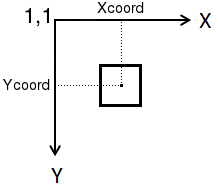Importing Data
Table of Contents:
Introduction
In Scipion the import is almost the only place where the user needs to deal directly with files. In our model each protocol has very well defined inputs and outputs, which are data objects. These objects (_SetOfMovies_, _SetOfParticles_, _Volume_, _CTFModel_, etc.) encapsulate the underlying files and formats. When importing data like _SetOfMovies_, _SetOfMicrographs_ or _SetOfParticles_, the user provides critical information (such as the Pixel Size). This information will not be requested any more and should be properly propagated.
Since important information is provided during the import step, it is recommended to take your time to check that all input parameters are correct. When importing, the binary files are not copied to the project to avoid data duplication. Instead, soft links are created pointing to the files location. If you move your project to another computer these links may be broken. There is an advanced option where you can set _Copy files?_ to Yes. In this case, the project is more self-contained at the price of using more disk space.
The following paragraphs describe supported formats for different import objects.
CTFs
Import of CTF estimation results is possible for:
.ctfparam files from Xmipp.
.log/.txt/.out files from CTFFind3/4. Typically, user has to have _MicName_ctffind3.log_ and _MicName.ctf_ files in the import folder so that both CTF parameters and power spectrum could be detected.
.log files from Gctf. Similarly to CTFFind, the log files are usually _MicName_ctffind3.log_ or _MicName_gctf.log_.
Coordinates
Scipion can import coordinates from several picking programs:
.box files from EMAN1/2, Gautomatch
.json files from EMAN2 (_info/*_info.json_ files in EMAN2 project folder)
.pos files from Xmipp3 (STAR format)
.star files from Relion, Gautomatch
.txt files from Appion DogPicker
Coordinates files are supposed to match micrograph names, i.e. _MicName.box_.
In GUI protocol form import can be set to _Auto_ so that Scipion will try to
detect format type by file extension. You can also import simple txt files
containing two columns: _X-coord Y-coord_. In that case origin (1,1) should
be located at the top left corner of the micrograph with X-axis pointing right
and Y-axis pointing downwards. The coordinates mark the box center (fig. 1).
For details about import of coordinates inside Xmipp picker interface, see [here]
Micrographs
Micrographs can be imported either directly from files (default option, see the list of [supported formats] or:
emx - EMX files follow Electron Microscopy Exchange format (details can be found [here]
scipion - you can provide .sqlite database file created previously with Scipion and containing all associated micrograph metadata
xmipp - Xmipp metadata files (.md) are usually produced by import or preprocess protocols.
Particles
Scipion will try to automatically read metadata associated with particles (alignment, CTF etc. if available). Besides particle set, Scipion might create _SetOfClasses_ or/and _SetOfMicrographs_ that are associated with imported particles. The following formats are currently supported:
files - default import mode
emx - EMX files follow Electron Microscopy Exchange format (details can be found [here]
frealign - FReAlign files. You need to provide both stack file and .par file
relion - Relion STAR file, e.g. _itXX_data.star_
scipion - .sqlite file created previously with Scipion, e.g. _particles.sqlite_
xmipp3 - Xmipp metadata file, e.g. _images.xmd_
Tilt pairs
Protocol scipion - import tilted micrographs allows to import tilt pair images, e.g. from RCT dataset. In this first version of the protocol, pairs assignment is done by micrograph order but in next versions a wizard will be provided.
This means the patterns for tilt pair images should be i.e. img_untilt_*.tif and img_tilt_*.tif, corresponding to micrographs img_untilt_01.tif, img_untilt_02.tif etc. and img_tilt_01.tif, img_tilt_02.tif etc.
Movies, volumes, averages, masks etc.
All other Scipion objects are imported directly from files. Look at the list of [supported image formats]. Right now, DM4 files and new IMAGIC format are not fully supported yet (you still can import such files), but we are working on it.
Movies are expected to be in stack files (e.g., mrc, mrcs etc.). However, import of individual frames is also possible (see Frames tab in Import movies protocol GUI).
Import/export Scipion projects and workflows
The ability to export/import workflows in Scipion is a great way to reproduce previous processing steps. It is particularly useful to repeat steps for similar samples or to share knowledge between users. Scipion stores workflow in a text file in JSON format that is human-readable and easily editable.
To import existing workflow, in main project window select Project > Import workflow and choose a .json file. If you want to export certain protocols, select >=2 protocol boxes in main project window and click Export.
It is also possible to import whole projects, e.g. from other computer. To do so, click on Import project button in the main Project window and provide a path to the project folder (usually in ScipionUserData/Projects). By default, Scipion will copy the folder and try to fix broken links. You can help it by providing raw files location.

